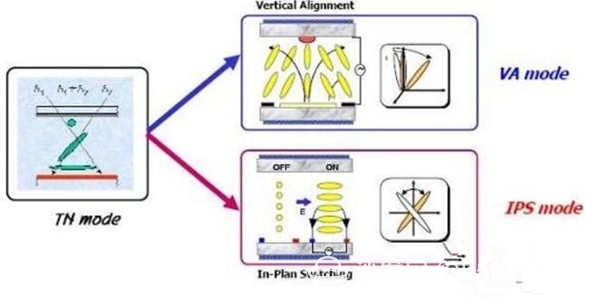The main component of the TV is the screen. This can be seen in the three pack rules of all TV manufacturers. The whole machine has a one-year warranty and the main parts have a three-year warranty. The TV screen is the main component. But is the TV screen a soft screen or a hard screen? There have also been confrontations between different manufacturers, consumers are confused. Under the advertisements of the sky, IPS hard screens seem to be more dominant, but it is puzzling that Sharp and Samsung, which are at the forefront of panel technology, produce soft screens. Then, are soft screens and hard screens really? What is the difference? As for the facts, Xiao Bian will give you an analysis today to take a look.
First, soft screen, hard screen distinction:
Soft screen, generally refers to VA screen. Fujitsu's MVA technology (Multi-domain Vertical Alignment) can be said to be the earliest wide-angle LCD technology. Samsung's PVA technology (Patterned Vertical Alignment) also belongs to the category of VA technology.
Hard screen, generally refers to the IPS screen. Hitachi introduced the LCD technology (In-Plane Switching, planar conversion) in 2001. Both poles are on the same plane, unlike other liquid crystal mode electrodes, which are arranged on top and bottom. Since the electrodes are on the same plane, the liquid crystal molecules are always parallel to the screen regardless of the state, which will reduce the aperture ratio and reduce the transmittance.
The most popular method of identification is that the VA soft screen will show water lines with light strokes, and the IPS hard screen with light strokes will not be easily deformed by water lines.
Second, the screen's hardware and software is not the standard to identify the advantages and disadvantages of the LCD panel Nowadays, VA wide viewing angle technology (soft screen) screen manufacturers are AUO, CMO, CPT, And Sharp; IPS technology (hard screen) with IPS Alpha and LG Display.
In fact, it can be inferred from technology vendors that Sharp, Samsung, which ranks among the top in the world, are soft-screen technologies. Soft-screens are not inferior to hard-screens, and hard-screens are not necessarily high-quality.
The so-called soft screen and hard screen, although there are certain differences in the production process, but there is no difference in performance. The fundamental difference between the two lies in the way the liquid crystal molecules are arranged. The hard screen and the soft screen are also the physical structure of the liquid crystal. The hard screen liquid crystal molecules are arranged horizontally, and the soft screen is arranged vertically.
Third, different manufacturers have their own advantages and disadvantages of the screen, the most realistic view of the eyes From a visual point of view, the technology between the hard and soft screen has no obvious gap, are between 170-180 degrees, but because of different manufacturers and performance Respectively, there will be some differences in response speed, dynamic picture performance, and contrast.
When the user purchases a TV, on the same occasion, using the same signal source and comparing two different LCD TVs, if there is a significant difference in picture quality, then the key issue should be the level of the LCD panel and the performance of the core driver chip. Instead of the screen's "soft" and "hard."
In many standards relating to the performance of LCD screens promulgated by the international or domestic industry, "soft screen" and "hard screen" have never been classified as a major criterion for distinguishing between merits and demerits.
When everyone buys a TV, don’t be overwhelmed by advertisements. The actual colors they actually see are the most practical ones.
Smart TV/box information can focus on smart TV information network sofa butler (http://), China's influential TV box and smart TV website, providing information, communication, TV boxes, smart TVs, smart TV software, etc. Answering questions.
Mobile Screen Protector Material,Screen Protector Roll Material,Raw Material for Screen Protector






